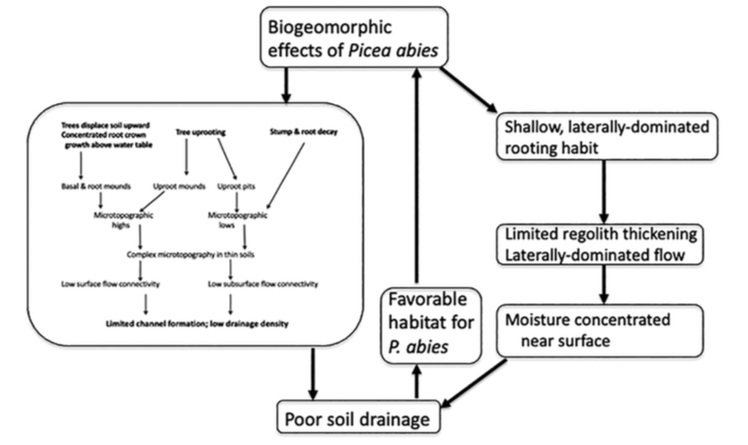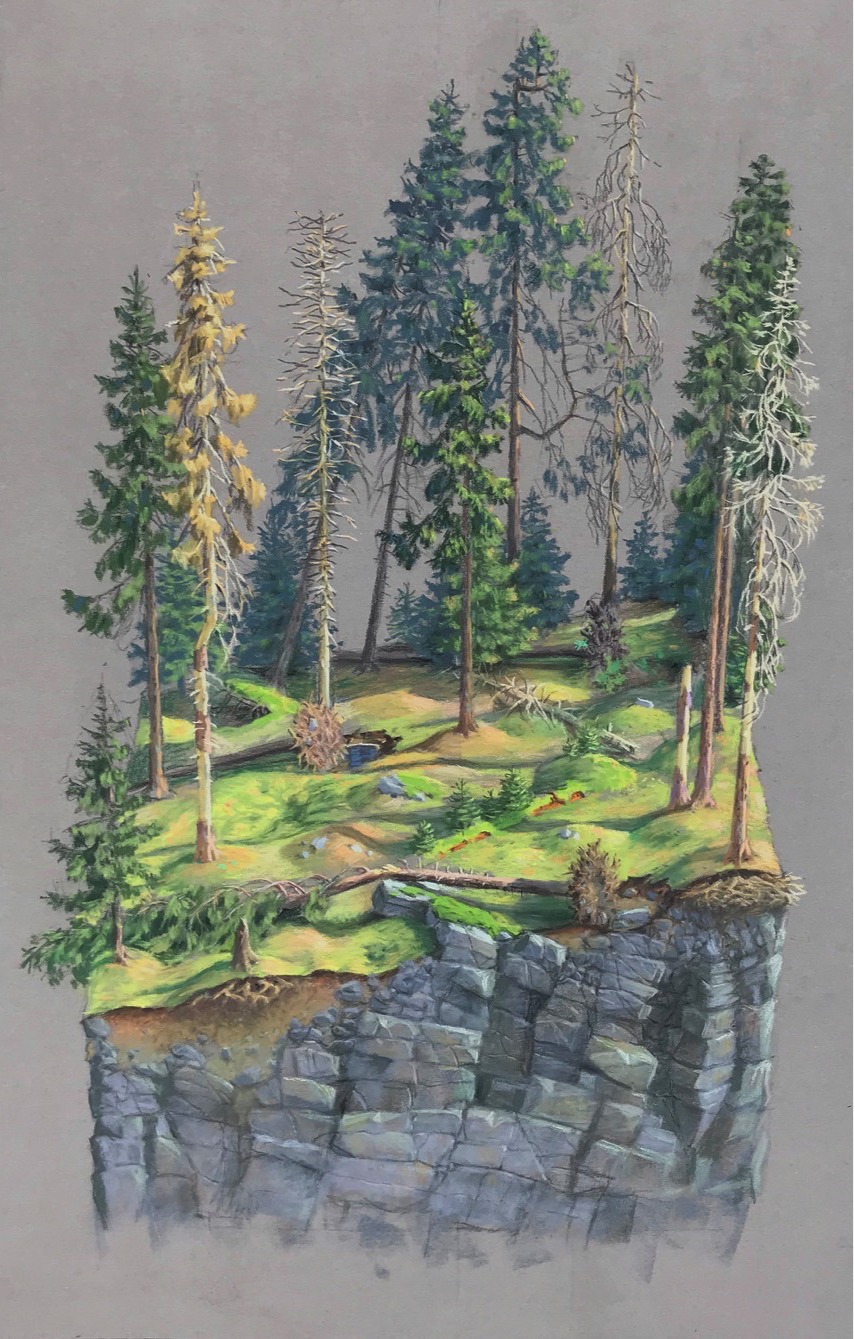In the first part of this thread I tried to show how artist Petr Mores collaborated with Pavel Šamonil and myself to depict certain landscapes of the Šumava Mountains in central Europe to show interactions among topography, geology, soils, and vegetation. In this installment I’ll get a bit more specific with respect to the story we are trying to tell.
The short version of the story is that Norway spruce (Picea abies) modifies its environment (ecosystem engineering), mainly through biogeomorphic effects, in a way that largely controls the development of landforms and hydrologic fluxes. In doing this, Picea abies helps maintain environmental factors that favor the success of spruce relative to competing trees.
Here’s the way Pavel and I depicted it in a scientific article (Phillips and Samonil, 2021; available here):

Biogeomorphic effects of Picea abies limiting the development of fluvial dissection and channelized surface drainage (Fig. 12 from Phillips & Samonil, 2021).
The trees create hummocky topography in two ways. First, the root growth displaces the soil upward, and roots grow mainly laterally, above the water table. This creates pronounced basal mounds around each tree (or sites formerly occupied by trees), with intervening low spots or swales. The shallow-rooted spruce are also prone to uprooting, which creates pit-mound pairs. The pits are where substrate is ripped up by roots; the mounds form as the uprooted roots decay and the displaced soil falls to the ground. These processes create irregular microtopography in an area of thin soils (glacial and periglacial processes predominated before the Holocene). This leads to low connectivity for surface flow, as runoff from the local highs quickly finds its way into one of the pits or swales. And so also for subsurface flow, where potential pathways are disrupted. With limited connectivity there is little opportunity for flow convergence sufficient to incise channels. As a result, channelized surface flow is rare, and the drainage density is very low.
But there’s more! The shallow, laterally-oriented root architecture of P. abies helps direct infiltrated water and subsurface flow laterally rather than downward, and the roots do not penetrate as deeply into the parent material as trees with taproots or more vertically-oriented root architectures. This leads to limited thickening of regolith and soil. These factors (plus the ability of spruce litter to hold moisture near the surface) create an environment of poor soil drainage and wet surface layers. Of all the trees in that region, spruce is best adapted to those conditions.

Summary of how biogeomorphic feedbacks of Picea abies maintain favorable habitat for the species. Subsystem at left is the same as the figure above. (Fig. 13 from Phillips & Samonil, 2021).
Details and supporting evidence are available in our article.
Now take a careful look at Petr’s painting:

Biogeomorphological domination (Petr Mores).
You can see the hummocky topography, where neither surface nor subsurface runoff can flow very far before encountering an obstacle or a hole to go down. You also see the reasons for the topography—the basal mounding of the trees, and the uprooting of some trees. You see no surface channels, and the dense but shallow and disk-like root systems of the spruce. No channels are shown. Other cool details Petr was able to include are discussed in part 1 of this thread.
One of the points I made in the earlier post was that many unmanaged forests are characterized not by the relatively open setting shown above but by a dense tangle of logs and limbs. Petr’s drawing below shows one of these:

Forest scene from an unmanaged forest in the Czech Republic (Petr Mores).
------------------------------------------
Reference: Phillips, J.D., Šamonil, P. 2021. Biogeomorphological domination of forest landscapes: An example from the Šumava Mountains, Czech Republic. Geomorphology 383, 107698. https://doi.org/10.1016/j.geomorph.2021.107698
